Learn to recognize the plants of the Garrigue. Scents of the South and Herault
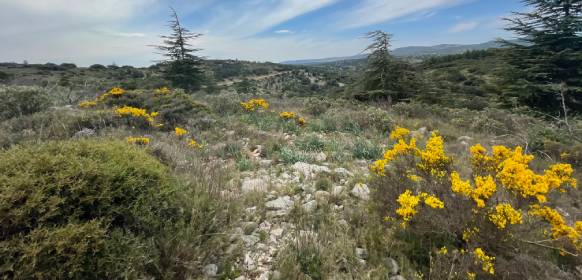
The garrigue, the Mediterranean, the song of the cicadas, the scent of thyme, the dry and sweltering heat... Be welcome in the South of France! You love the garrigue, the plants but you don't know how to recognize the plants of the Garrigue? This article is made for all nature lovers, who wish to learn more about the flora that surrounds them!
It has been associated with the South of France since time immemorial and is the pride of the Languedoc and Provence. But did you know that in the past our region was covered with high dense forests of green and white oaks? We were far from the current scenery!
Indeed, the garrigue is the progressive result of the exploitation of the forests by man, of excessive grazing and repeated fires. But nature knew how to adapt and to show an amazing aptitude and adaptability. For example, some conifers such as the Aleppo pine reproduces thanks to fires: the pine nuts burst under the strong heat of the fire and allows the dispersion of seeds (pine nuts): they are said to be pyrophilous.
Today the garrigue constitutes a ecosystem in its own right about which we are constantly learning.
The languedoc garrigue : several types of soil
The terra rossa
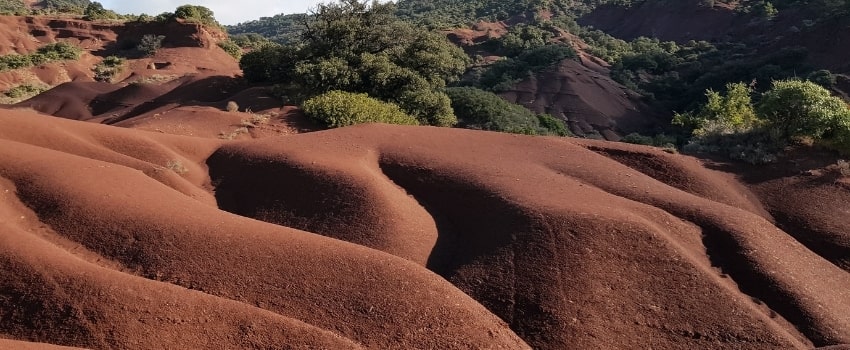
This is a so-called fersialitic soil. Its color is due to the oxidation of iron and clay sediments.
This red color can be found all around the Mediterranean basin as for example in the Gardiole massif or on the Causse de Viols-le-Fort.
On the Saint Jean de la Blaquière side, we use the word ruffle instead to refer to this very special land.
Brown calcareous soils
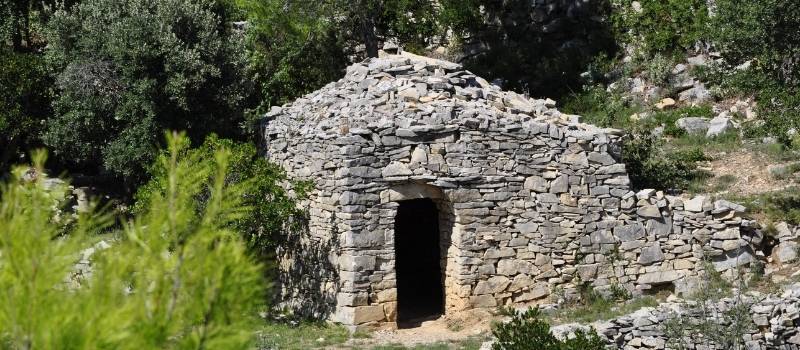
This is the most common type of soil in the garrigue, ideal for farming as long as the soil is respected.
It is from this soil that the large limestone stones are extracted, with which the capitelles, those famous small farmer's huts made of dry stone, are built.
Low limestone soils
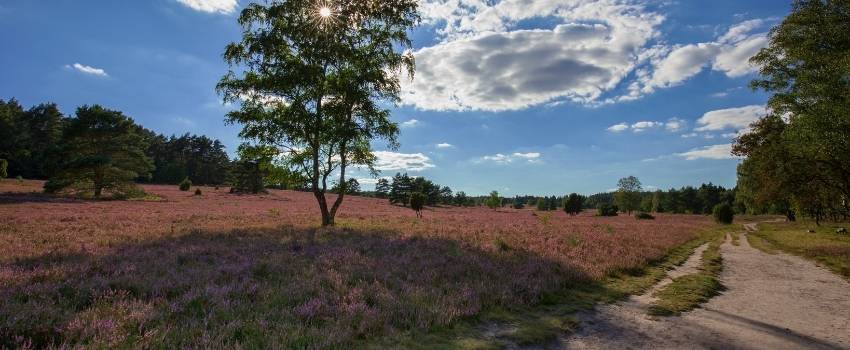
These soils can be sandy or siliceous. You can recognize these soils in part thanks to the vegetation found there: you will see mainly heathers, arbutus, myrtles, but also umbrella pines and three varieties of oak (holm oak, white oak and cork oak).
The vegetation of the garrigue is rich in diversity. It is composed of a multitude of shrubs, trees, aromatic and medicinal plants, rare plants and even orchids. I have selected a few of them for you to have fun recognizing them on your next walks!
Some trees and shrubs of the garrigue
In reading the garrigue landscape, one can note the scarcity of large trees and the presence of many shrubs and fragrant thorny bushes. Here are some examples:
The Kermes oak
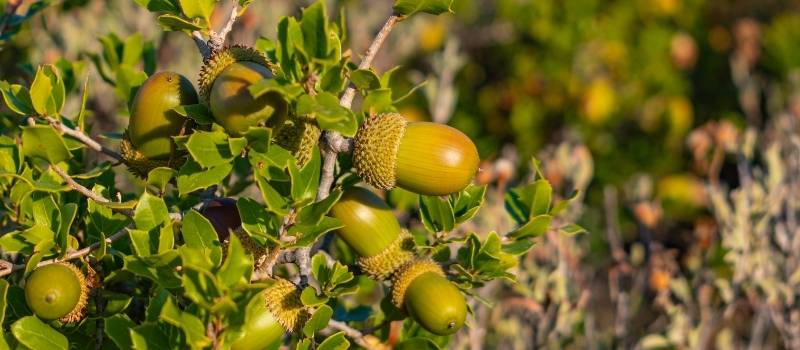
In Roman times, the cultivation of the Kermes oak was widespread for one reason: the cochineal. This tiny white parasite invaded these shrubs. Dried and crushed they were made into a prized carmine red dye.
This is how many dyers and weavers made their fortune particularly in Montpellier, a city famous for its luxurious fabrics dyed with this red.
Today, cochineal beetles provide the food industry with the dye E120, present in some drinks, pastries and even yogurt...!
The Cade juniper
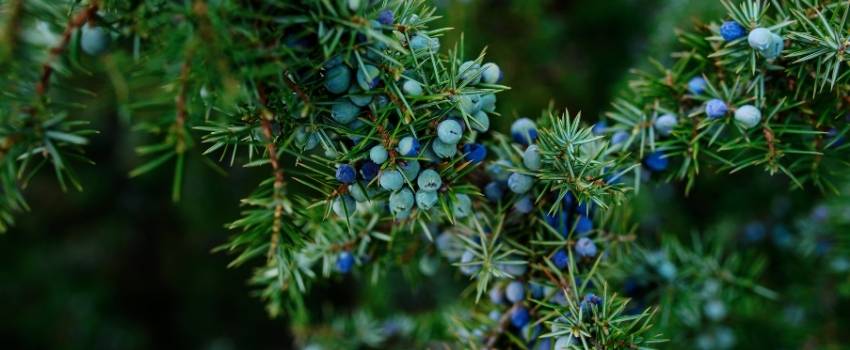
The berries of the c cade juniper are edible. They are also used to make alcohol, gin in particular.
One also makes an incense very known to purify the houses, and whose use was widely spread in period of epidemic: the poudre de cade, obtained with the wood.
It can be distinguished from its cousin the Phoenician juniper because it has two white stripes on each leaf.
A little memo-technical way to remember it: That has 2 = Cade.
The Aleppo Pine
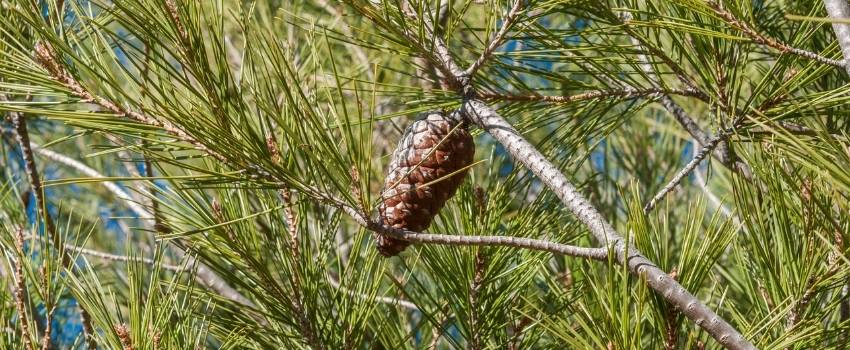
They shape the landscape of the garrigue, it is the pine most widespread in our region and contrary to what its name indicates does not originate from the East!
If today the Aleppo pine has a use limited to carpentry, previously it was widely used for what is called gemmage, which consists of extracting the resin of the pine to make, for example, cleaning products, varnishes and paints, soaps and glues.
Salzmann pine
This is a variety of black pine once widespread throughout the Mediterranean. Today it is an endangered species due to the expansion of human and agricultural activity and the threat of fires.
In Hérault we are fortunate to be home to one of the few French populations of this tortuous black pine! The largest population of Salzmann pine is found in the forest of Saint Guilhem le Desert.
Aromatic plants of the Languedoc garrigue
In the history of aromatic plants, there are two groups: the aromatic plants of the Mediterranean and then the others. They are edible, flavor your summer dishes, inspire great perfumers and are allies of naturopaths. The aromatic plants of our garrigues are naturally abundant, such as thyme, lavender, oregano...
Thyme and Rosemary
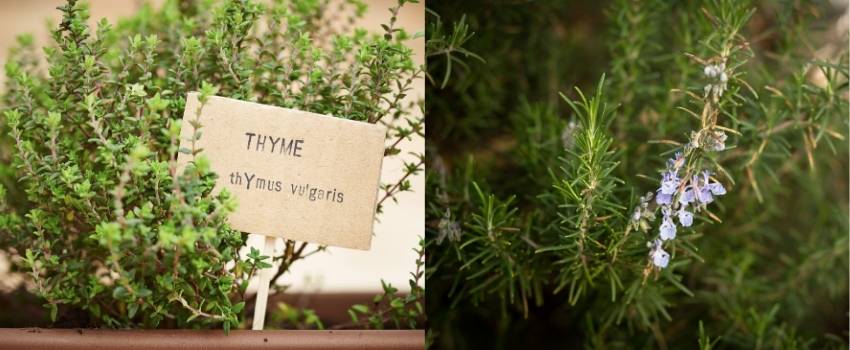
You know them, they perfume the scrubland all year long thanks to their evergreen foliage. Used since the dawn of time for their thousand virtues, they are the princes of the scrubland.
Sarriette
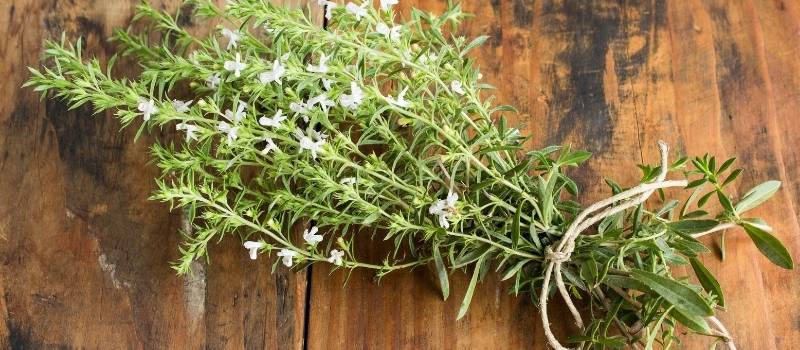
With its companions thyme and rosemary, it appears in the composition of the herbs of Provences. If however its use is mostly known in the field of cooking, it is nevertheless an herb with medicinal virtues. Among others, savory can be used as an antiseptic and antiviral. It is a good ally against colds and respiratory disorders.
Common fennel
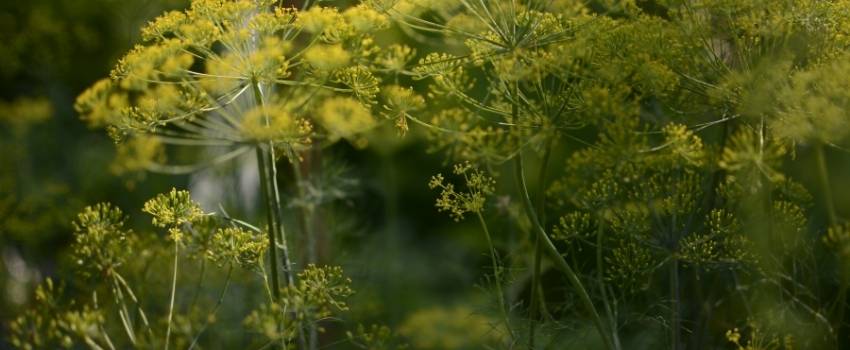
Among the Greeks the fennel was considered a sacred plant, associated with magic. Among the Romans it was reputed to be an aphrodisiac plant.
Also called Vine Fennel or Poor Man's Anise, wild fennel is widely used in cooking for its aniseed flavor. When young, the leaves can accompany a salad. Cooked they are added to other vegetables, meat or fish.
It also has many medicinal virtues including antimicrobial and expectorant properties. Fennel is also well known for its digestive benefits!
The big plus with fennel is that everything can be used! The seeds, the leaves, the stalk and the bulb. Have fun peeling a stalk and tasting: a real treat, it's delicious!
Recognize the medicinal plants of the scrubland
It is not surprising to learn that the scrubland like any other ecosystem brings together a great diversity of medicinal plants, used since ancient times for their virtues and whose use continues through the centuries. Among them we can cite:
Sarsaparilla
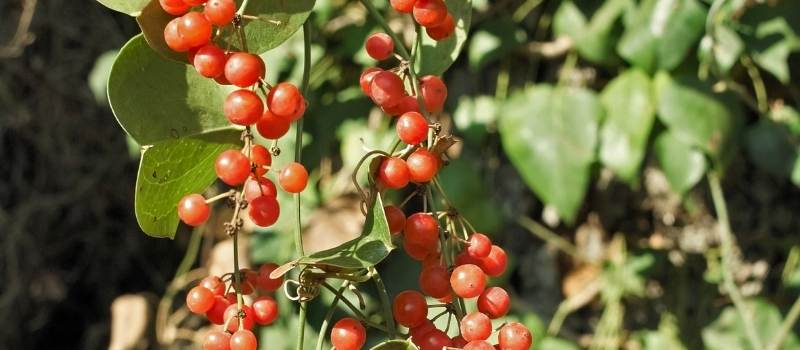
In some countries, Sarsaparilla is considered an aphrodisiac and in the land of the Smurfs it makes the main ingredient of the famous magic potion!
Today, sarsaparilla is used to treat dermatological problems such as eczema, psoriasis, hives, scabs...
It is also used for some digestive problems and to treat some lung problems such as bronchitis or wet cough!
Honeysuckle
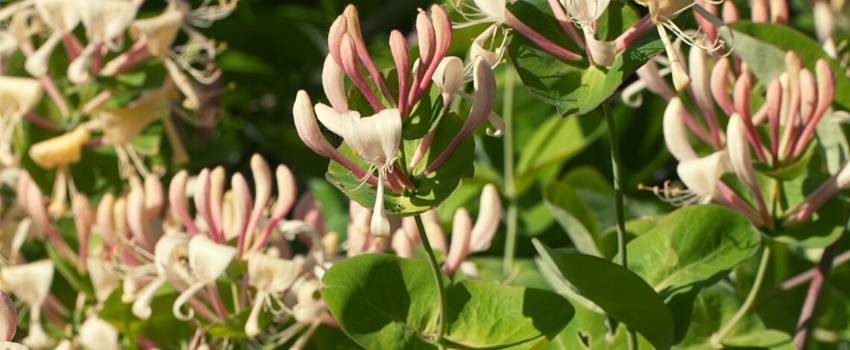
The honeysuckle has many medicinal qualities especially with regard to respiratory problems.
This plant also has sedative properties that make it a good treatment for nerves, against anxiety and sleep disorders.
It also has hepatoprotective characteristics used for liver diseases like jaundice or hepatitis.
You can enjoy the nectar of its flowers by cutting the pistil at the base: pull gently and you will see a small droplet of very sweet nectar coming out.
The cottony rockrose
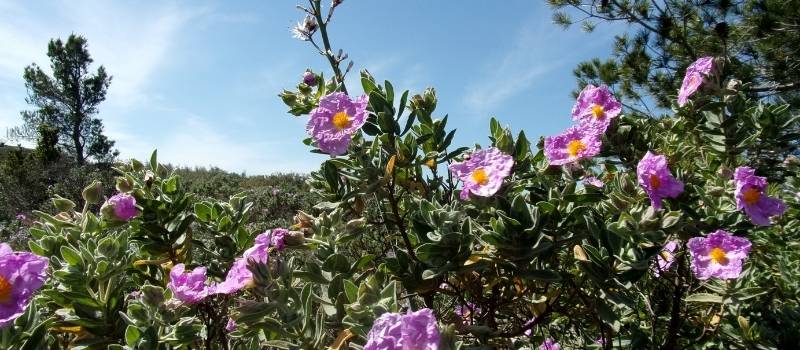
The Montpellier rockrose and the cistus porte-laudanum are part of a large family of plants that are frequently found on the dry, hot soils of southern France, especially in the garrigue.
Originally a sticky substance that cistus secretes when it is hot was collected from the hair of goats: the labdanum. Shepherds boiled the flowers and buds to make a poultice to treat injured animals. It is still used in medicine as a plaster.
It is an anti-hemorrhagic, healing and skin regenerating plant.
In perfumery, it is used as a substitute for ambergris.
Other endemic plants, rare plants and garrigue orchids
The garrigue is also a refuge for certain rare plants, plant species with low populations, and/or which occupy a limited geographical area and are therefore vulnerable and must be protected!
The Cardabelle
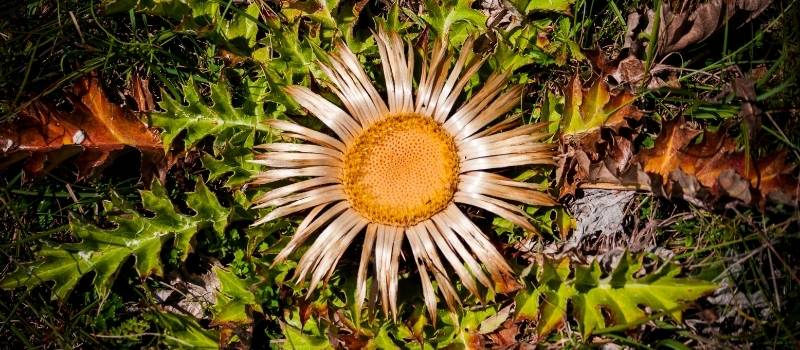
There are many legends and pretty stories about the cardabelle, or Acanthus-leafed carline.
You'll often see it hanging on the doors of houses in Saint Guilhem le désert or la Couvertoirade.
Formerly hung on the doors of the sheepfolds it protected from bad spells and was used to card, that is to say to disentangle the wool of the ewes.
The cardabelle, also called the magical thistle allowed to predict the weather. Indeed it is a flower that opens in the sun and closes when the humidity announces the rain.
In the past, peasants consumed its flower which reminds the taste of artichoke. It is also part of the same family.
Attention today this pretty plant is protected and we invite you not to collect them!
Montpellier aphyllante, symbol of the garrigue
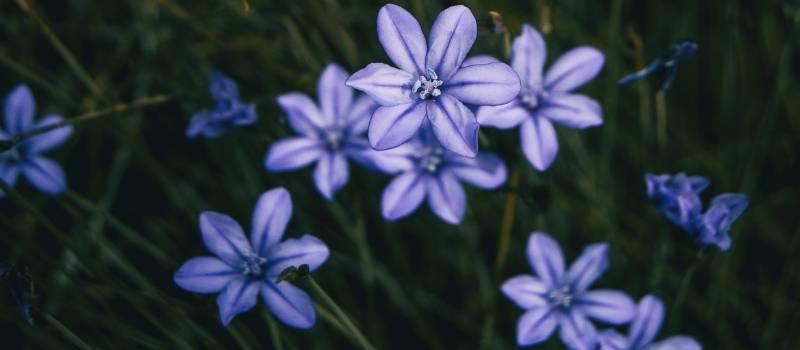
Her name means "flower without leaves" in Greek.
Also called Montpellier blue carnation, it has nothing to do with a carnation though. It is one of the most characteristic flowering plants of the scrubland, impossible to miss it during your walks!
The flowers are edible and can be used to decorate cakes or salads.
Aristoloche Pistoloche, a precious element of Mediterranean biodiversity
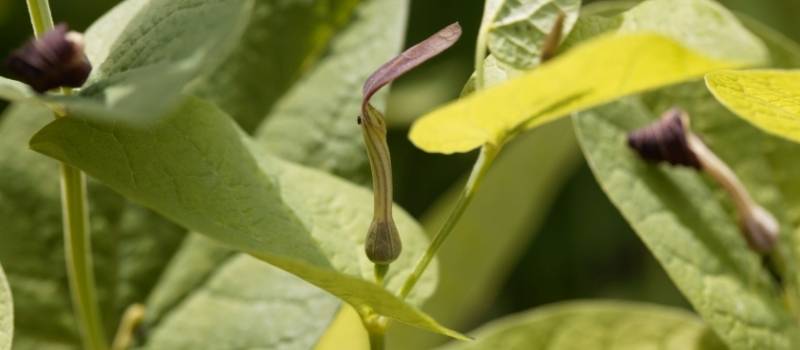
It's name doesn't leave anyone indifferent just like its trunk-like flower that seems to scream or laugh out loud.
Yet this small plant often goes unnoticed, hidden under other larger ones.
It is a rare plant due to its limited range, and moreover is the primary host plant for the protected butterfly the prosperina, which lays its eggs on the plant's leaves and flower. Preserving the breeding habitat of this butterfly therefore helps preserve the species!
Orchids, admire the fragile beauty of these wild flowers
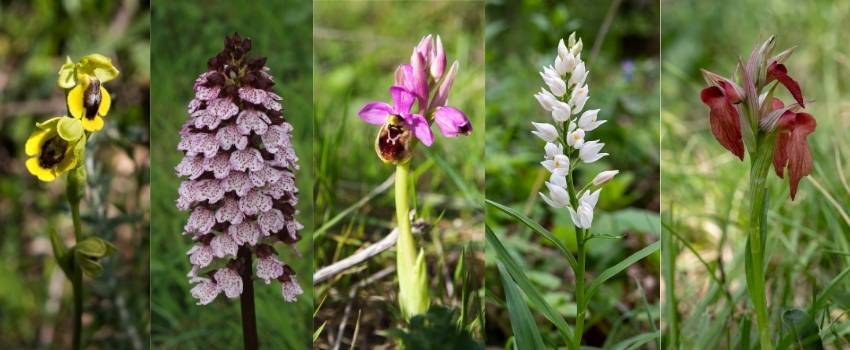 From left to right: Yellow Ophrys, Pyramidal Orchid, Wasp Ophrys, Cephalanthera and Separias Lingua.
From left to right: Yellow Ophrys, Pyramidal Orchid, Wasp Ophrys, Cephalanthera and Separias Lingua.
Would you have imagined that our garrigue was populated with wild orchids?
France counts about 170 species of orchids and the Languedoc would count about a hundred.
They are a real treasure that nature offers us.
The best time to observe them is spring, for a large majority of species.
Many are threatened and protected. In doubt and in order to preserve our beautiful scrubland, we invite you not to pick them.
You will have understood, the garrigue is a complex world, with grandiose landscapes that contain many treasures and an exceptional flora.
The best season to observe this abundantly rich nature remains spring.
From April to May, it is the ideal period to observe all the flowers that unveil themselves, exploding their perfume and their beauty in this magical place, where I was born: my wonderful scrubland.
To conclude, it was impossible to make a complete list of all the plant species that one encounters in the garrigue as there are so many.
To preserve this fragile environment remember not to collect plants if you have any doubt about its state of protection.
Finally, as this article is mainly intended to show what plants are frequently found in the garrigue, we recommend that you do not consume plants for medicinal or culinary purposes if you are not sure you have correctly identified it.
There are many books on medicinal and edible plants to help you recognise the plants of the Garrigue, but the best way is to ask a nature guide.
To admire the beauty and diversity of the garrigue landscapes, two excursions are available: discover the Hérault Valley or explore the surroundings of Pic Saint Loup with WiSud!
Manon Esclusa, Guide Accompanist









